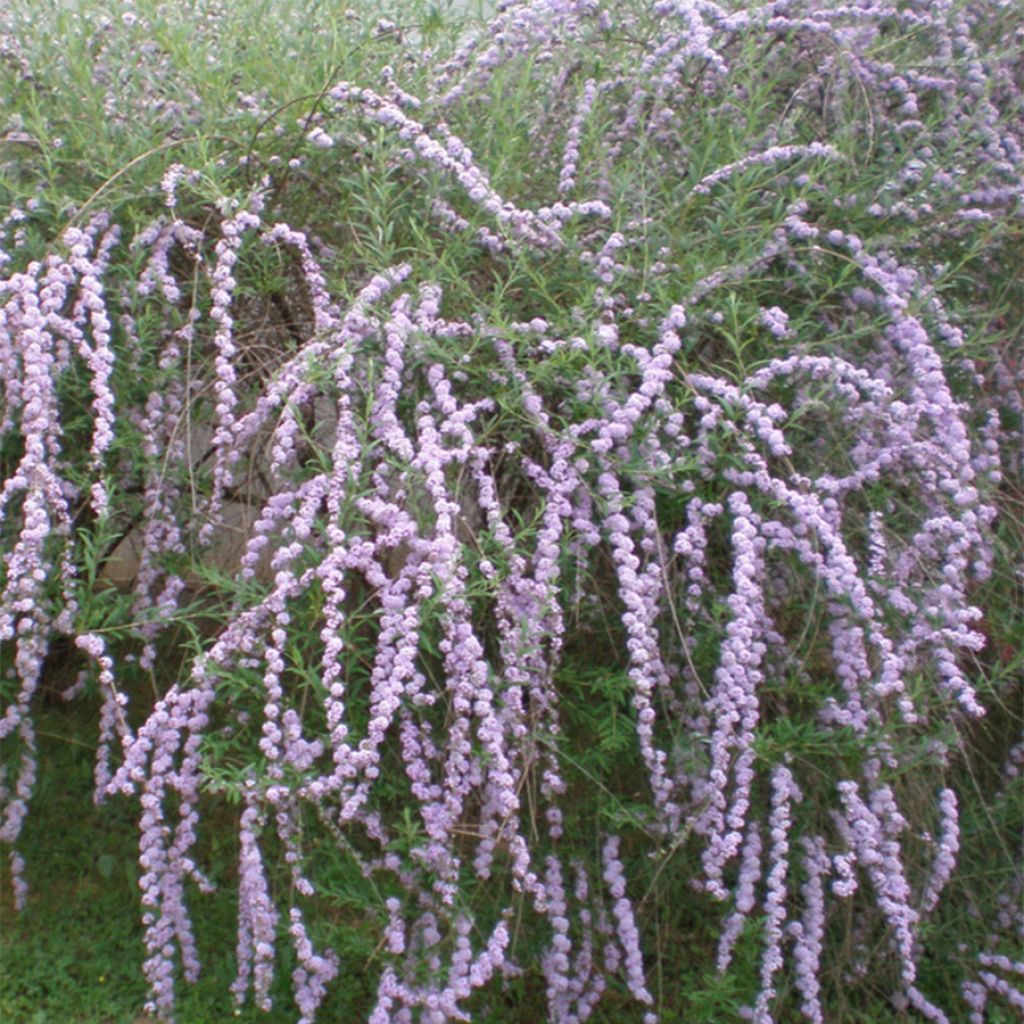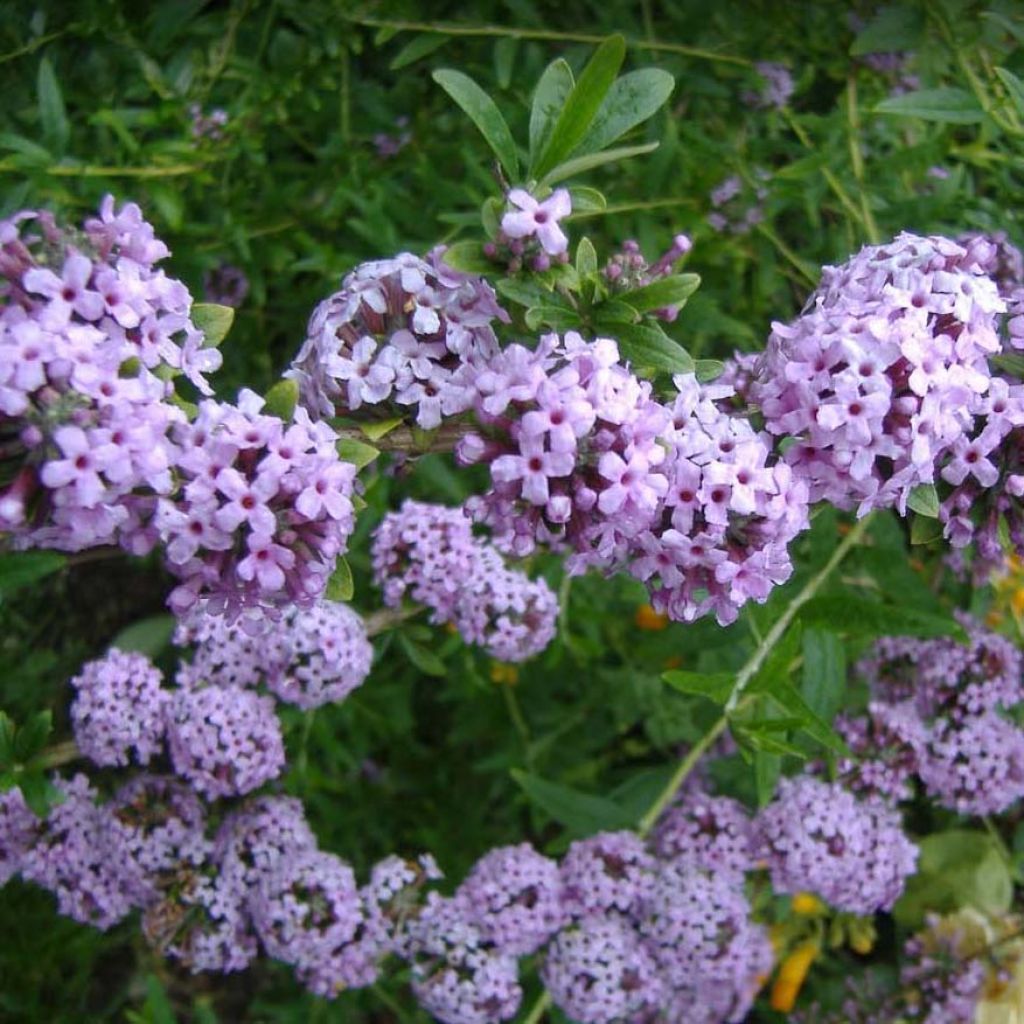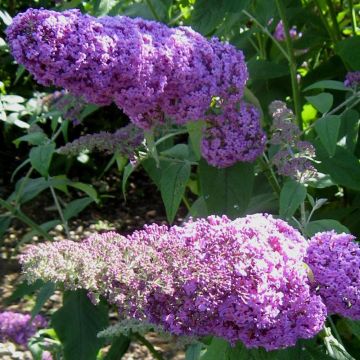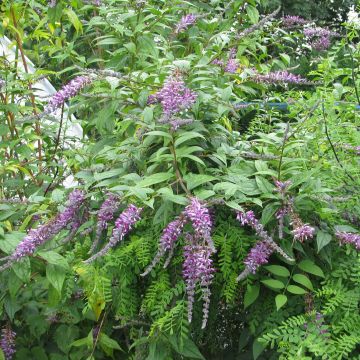

Buddleja alternifolia - Butterfly Bush


Buddleja alternifolia - Butterfly Bush


Buddleja alternifolia - Butterfly Bush


Buddleja alternifolia - Butterfly Bush


Buddleja alternifolia - Butterfly Bush
View more pictures
Hide images

Julien B.

Buddleia alternifolia 1 year after purchase. It has literally exploded. It looks stunning.
Julien B. • 83 FR
Buddleja alternifolia - Butterfly Bush
Buddleja alternifolia
Alternate-leaved Butterfly Bush
Very pretty, well-branched young plant, just like the photo. Planted, it's doing well. I can't wait for it to grow and brighten up its spot.
Petitnavion , 26/04/2025
Special offer!
Receive a €20 voucher for any order over €90 (excluding delivery costs, credit notes, and plastic-free options)!
1- Add your favorite plants to your cart.
2- Once you have reached €90, confirm your order (you can even choose the delivery date!).
3- As soon as your order is shipped, you will receive an email containing your voucher code, valid for 3 months (90 days).
Your voucher is unique and can only be used once, for any order with a minimum value of €20, excluding delivery costs.
Can be combined with other current offers, non-divisible and non-refundable.
Home or relay delivery (depending on size and destination)
Schedule delivery date,
and select date in basket
This plant carries a 24 months recovery warranty
More information
We guarantee the quality of our plants for a full growing cycle, and will replace at our expense any plant that fails to recover under normal climatic and planting conditions.
Would this plant suit my garden?
Set up your Plantfit profile →
Description
The alternate-leaved buddleja, or alternate-leaved butterfly bush, is a large shrub with a weeping habit, giving it a sense of lightness and undeniable elegance. In summer, its long drooping branches are covered in panicles of lilac-pink flowers that delight the eyes and attract numerous species of butterfly. Its deciduous leaves are arranged alternately on the branches (hence its species name, alternifolia). Hardy, growing in full sun or partial shade, even in poor soil, the butterfly bush can be showcased as a standalone plant or in a border with other shrubs and perennials.
Originally from Northwest China, Buddleja alternifolia, also known as alternate-leaved buddleja, is a deciduous shrub belonging to the Buddlejaceae family. Its bushy habit is a little unkempt but very elegant, thanks to its slightly arched long branches. It reaches a height of 3 m (9 ft 10 in) and a spread of 4 m (13 ft 1 in) in 4 or 5 years. Over the years, the branches of this buddleja tend to bend, allowing its magnificent flowers to sway in the wind. The previous year's branches are covered in panicles of lilac-pink flowers in June and July, producing a good amount of nectar that attracts butterflies. The silver-grey lanceolate leaves are arranged alternately on the branches.
Easy to grow, the alternate-leaved buddleja thrives in sunny locations. Plant it in light, fertile, moist, but well-drained soil. The butterfly bush only requires a simple pruning after flowering. However, every 2 to 3 years, it is good to cut back the branches to maintain a compact habit and prevent the shrub from becoming too open. In late winter, around March or April, remove half of the branches and cut away any dead wood.
Very tolerant of different soil types, the alternate-leaved butterfly bush is a robust and easy-to-grow plant that ages well. You can plant it as a standalone specimen to enjoy its weeping habit, or mix it with other shrubs to create beautiful borders or flowering hedges, such as other buddlejas (Lochinch, Naho Blue, White chip...). Equally, old-fashioned or English roses (old-fashioned rose Cuisse de Nymphe Emue, Generosa Chantal Thomass rose), cotinus, and lupins make good companions, and ornamental garlic will harmonise with the colour of its flowers.
Buddleja or Buddleia is named after its discoverer, Reverend Adam Buddle, a 19th-century English botanist.
Report an error about the product description
Buddleja alternifolia - Butterfly Bush in pictures






Plant habit
Flowering
Foliage
Botanical data
Buddleja
alternifolia
Buddlejaceae
Alternate-leaved Butterfly Bush
Central Asia
Other Buddleja -Butterfly bush
View all →Planting and care
Easy to grow, Buddleja alternifolia appreciates sunny locations. Plant it in a light, fertile, fresh but well-drained soil. The butterfly bush only requires simple pruning after flowering. However, every 2 to 3 years, it is a good idea to cut back the branches to maintain a compact habit and prevent the shrub from "opening up". In late winter, around March or April, remove half of the branches and cut off all the dead wood.
Planting period
Intended location
Care
-
, onOrder confirmed
Reply from on Promesse de fleurs
Similar products
Haven't found what you were looking for?
Hardiness is the lowest winter temperature a plant can endure without suffering serious damage or even dying. However, hardiness is affected by location (a sheltered area, such as a patio), protection (winter cover) and soil type (hardiness is improved by well-drained soil).

Photo Sharing Terms & Conditions
In order to encourage gardeners to interact and share their experiences, Promesse de fleurs offers various media enabling content to be uploaded onto its Site - in particular via the ‘Photo sharing’ module.
The User agrees to refrain from:
- Posting any content that is illegal, prejudicial, insulting, racist, inciteful to hatred, revisionist, contrary to public decency, that infringes on privacy or on the privacy rights of third parties, in particular the publicity rights of persons and goods, intellectual property rights, or the right to privacy.
- Submitting content on behalf of a third party;
- Impersonate the identity of a third party and/or publish any personal information about a third party;
In general, the User undertakes to refrain from any unethical behaviour.
All Content (in particular text, comments, files, images, photos, videos, creative works, etc.), which may be subject to property or intellectual property rights, image or other private rights, shall remain the property of the User, subject to the limited rights granted by the terms of the licence granted by Promesse de fleurs as stated below. Users are at liberty to publish or not to publish such Content on the Site, notably via the ‘Photo Sharing’ facility, and accept that this Content shall be made public and freely accessible, notably on the Internet.
Users further acknowledge, undertake to have ,and guarantee that they hold all necessary rights and permissions to publish such material on the Site, in particular with regard to the legislation in force pertaining to any privacy, property, intellectual property, image, or contractual rights, or rights of any other nature. By publishing such Content on the Site, Users acknowledge accepting full liability as publishers of the Content within the meaning of the law, and grant Promesse de fleurs, free of charge, an inclusive, worldwide licence for the said Content for the entire duration of its publication, including all reproduction, representation, up/downloading, displaying, performing, transmission, and storage rights.
Users also grant permission for their name to be linked to the Content and accept that this link may not always be made available.
By engaging in posting material, Users consent to their Content becoming automatically accessible on the Internet, in particular on other sites and/or blogs and/or web pages of the Promesse de fleurs site, including in particular social pages and the Promesse de fleurs catalogue.
Users may secure the removal of entrusted content free of charge by issuing a simple request via our contact form.
The flowering period indicated on our website applies to countries and regions located in USDA zone 8 (France, the United Kingdom, Ireland, the Netherlands, etc.)
It will vary according to where you live:
- In zones 9 to 10 (Italy, Spain, Greece, etc.), flowering will occur about 2 to 4 weeks earlier.
- In zones 6 to 7 (Germany, Poland, Slovenia, and lower mountainous regions), flowering will be delayed by 2 to 3 weeks.
- In zone 5 (Central Europe, Scandinavia), blooming will be delayed by 3 to 5 weeks.
In temperate climates, pruning of spring-flowering shrubs (forsythia, spireas, etc.) should be done just after flowering.
Pruning of summer-flowering shrubs (Indian Lilac, Perovskia, etc.) can be done in winter or spring.
In cold regions as well as with frost-sensitive plants, avoid pruning too early when severe frosts may still occur.
The planting period indicated on our website applies to countries and regions located in USDA zone 8 (France, United Kingdom, Ireland, Netherlands).
It will vary according to where you live:
- In Mediterranean zones (Marseille, Madrid, Milan, etc.), autumn and winter are the best planting periods.
- In continental zones (Strasbourg, Munich, Vienna, etc.), delay planting by 2 to 3 weeks in spring and bring it forward by 2 to 4 weeks in autumn.
- In mountainous regions (the Alps, Pyrenees, Carpathians, etc.), it is best to plant in late spring (May-June) or late summer (August-September).
The harvesting period indicated on our website applies to countries and regions in USDA zone 8 (France, England, Ireland, the Netherlands).
In colder areas (Scandinavia, Poland, Austria...) fruit and vegetable harvests are likely to be delayed by 3-4 weeks.
In warmer areas (Italy, Spain, Greece, etc.), harvesting will probably take place earlier, depending on weather conditions.
The sowing periods indicated on our website apply to countries and regions within USDA Zone 8 (France, UK, Ireland, Netherlands).
In colder areas (Scandinavia, Poland, Austria...), delay any outdoor sowing by 3-4 weeks, or sow under glass.
In warmer climes (Italy, Spain, Greece, etc.), bring outdoor sowing forward by a few weeks.


















































